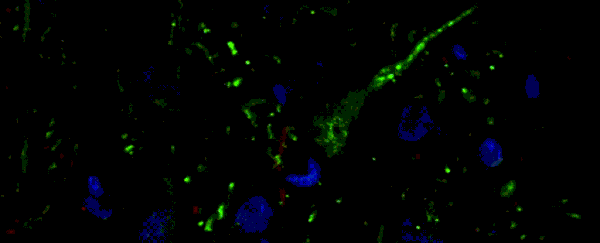Scientists taking a very close look at the architecture of neuron cells in the brain have found a key structural difference between primates and non-primates in the cortical neurons – cells that are part of the cerebrum.
The findings give us a greater insight into this most complex of organs, and how the form and function of neurons might differ between species. We may also learn more about human and animal evolution through the research.
Key to this difference in neurons is the axon fiber: a slender part of the neuron that carries electrical impulses. Before now, it was thought these axons almost always grow out of the cell body, but the new study shows they can also originate from dendrites – extensions that connect nerve cells together.
These axon-carrying dendrites are a lot more common in non-primates like cats and pigs than they are in primates, the team discovered. The study was based on existing archived tissue and specimens, and included an analysis of more than 34,000 individual neurons.
"A unique aspect of the project is that the team worked with archived tissue and slide preparations, which included material that has been used for years to teach students," says neurobiologist Petra Wahle, from the Ruhr University Bochum in Germany.
The researchers looked at samples covering mice, rats, pigs, cats, ferrets, macaque monkeys and humans. While axon-carrying dendrites were found in all species, there were significantly more of them in non-primates.
A crucial part of the research was the use of the latest high-resolution microscopy techniques to get a close-up look at cell development, further illuminated through the use of five different staining methods on the cells being studied.
"This allowed the detection of axonal origins accurately tracked at the micrometer level, which is sometimes not so easy with conventional light microscopy," says Wahle.
More research is going to be required to understand why some species have a higher percentage of axon-carrying dendrites than others, and what their evolutionary advantage might be for animals that make use of them.
Neurons usually act as gatekeepers when it comes to deciding which signals get passed on and which don't, according to other inputs they also receive. This is known as somatodendritic integration. One difference axon-carrying dendrites seem to have is the ability to bypass this gatekeeping and independently choose which messages make it around the brain network.
As yet, we don't fully know what that means for brain processing, but we should get more clues over time. The researchers found that domestication in animals didn't seem to affect the number of these axon-carrying dendrites, with pigs and boars having similar proportions. Also, animals from various species seem to be born with them, rather than developing them as they get older.
With so many neurons to monitor – tens of billions in some cases – the brain isn't an easy part of the body to study, though that's not putting scientists off. We're continually learning more about how neurons are arranged and how they work.
"Our findings expand the current knowledge regarding the distribution and proportion of axon-carrying dendrite cells in neocortex of non-primate taxa, which strikingly differ from primates where these cells are mainly found in deeper layers and white matter," write the researchers in their published paper.
The research has been published in eLife.
